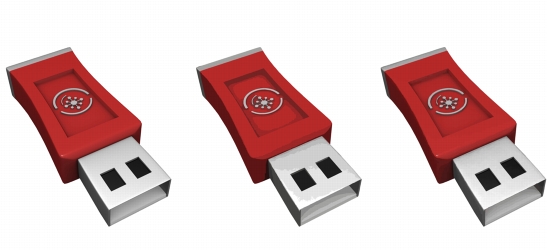Precision Unleashed: Mastering the Art of Fine-Tuning Traced Results in CorelDRAW

Introduction: CorelDRAW, a stalwart in the world of graphic design, continues to be a trailblazer by offering tools that cater to both novice and seasoned designers. Among these tools, the ability to fine-tune traced results emerges as a crucial feature, empowering designers to achieve unparalleled precision and control in the transformation of bitmap images into vector graphics. In this extensive article, we embark on a detailed exploration of fine-tuning traced results in CorelDRAW, unraveling the methods, advantages, and the pivotal role this feature plays in elevating the quality of design outcomes.
Understanding the Essence of Fine-Tuning Traced Results: Fine-tuning traced results involves the meticulous adjustment of vectorized graphics generated through the tracing process. While the initial trace provides a foundation, fine-tuning allows designers to address specific nuances, enhance details, and ensure the seamless transition from bitmap to vector. CorelDRAW’s fine-tuning capabilities empower designers with a granular level of control over the final outcome, aligning the vectorized result more closely with their creative vision and project requirements.
Step-by-Step Guide to Fine-Tuning Traced Results in CorelDRAW:
- Activate Node Editing:
- Upon completing the trace, activate the Node Editing tool in CorelDRAW. This tool provides access to individual nodes, allowing designers to manipulate the shape and structure of the vectorized graphic.
- Node Adjustment and Deletion:
- Use the Node Editing tool to adjust the position of individual nodes. Dragging nodes allows for precise modifications to the shape, ensuring accuracy and fidelity to the original image. Additionally, unnecessary nodes can be deleted to streamline the vector structure.
- Curve Control Handles:
- Fine-tune the curves in the traced result by manipulating the control handles associated with nodes. This grants designers the ability to achieve smooth transitions between curves and maintain the integrity of the image.
- Bezier Curve Refinement:
- For vector graphics with complex curves, utilize the Bezier curve tools to refine and perfect the shape. Adjust control points and curve handles to achieve the desired curvature and smoothness.
- Segment Editing:
- CorelDRAW allows designers to edit individual segments between nodes. This feature is particularly useful for adjusting specific portions of the vector graphic, ensuring that every detail aligns with the creative vision.
- Align and Distribute:
- Use CorelDRAW’s alignment and distribution tools to ensure that elements within the vectorized result are precisely positioned and maintain consistent spacing. This step contributes to the overall balance and visual appeal of the design.
- Color and Fill Adjustments:
- Fine-tuning extends beyond shape adjustments to include color and fill modifications. CorelDRAW provides a robust set of tools for adjusting color attributes, ensuring that the vectorized result aligns with the intended color palette.
- Layer Organization:
- Organize vector elements into layers to enhance manageability. This allows designers to selectively hide, lock, or modify specific portions of the design, contributing to a more efficient and structured workflow.
- Compare with Original Image:
- Continuously refer back to the original bitmap image during the fine-tuning process. This ensures that designers remain aligned with the source material and make adjustments that enhance, rather than deviate from, the intended outcome.
- Iterative Review:
- Fine-tuning is an iterative process. Regularly review and refine the traced result, making incremental adjustments as needed. Iteration contributes to the progressive improvement of the vectorized graphic.
Advantages of Fine-Tuning Traced Results:
- Precision and Control:
- Fine-tuning provides designers with unparalleled precision and control over the vectorized result, allowing them to refine shapes, curves, and details to perfection.
- Maintaining Original Detail:
- By addressing specific nuances during the fine-tuning process, designers can ensure the preservation of intricate details from the original bitmap, contributing to a faithful representation.
- Adaptability to Creative Vision:
- Fine-tuning empowers designers to align the traced result more closely with their creative vision. This adaptability ensures that the final vectorized graphic meets the intended aesthetic and design goals.
- Optimized Vector Structure:
- Deleting unnecessary nodes, adjusting curves, and refining shapes contribute to an optimized vector structure. This not only enhances visual appeal but also streamlines file sizes and facilitates efficient editing.
- Consistency and Professionalism:
- Fine-tuning ensures consistency and professionalism in the final design. Elements are precisely aligned, curves are smooth, and details are refined, resulting in a polished and visually appealing vectorized graphic.
Considerations and Tips for Effective Fine-Tuning:
- Maintain Visual Consistency:
- Strive for visual consistency throughout the design. Ensure that adjustments made during fine-tuning contribute to a cohesive and harmonious overall appearance.
- Balance Detail and Simplicity:
- Fine-tuning requires a delicate balance between preserving intricate details and simplifying complex elements. Aim for a result that is both detailed and visually comprehensible.
- Utilize Grids and Guides:
- CorelDRAW provides grid and guide features that aid in precise alignment. Utilize these tools to ensure that elements within the design are aligned with accuracy.
- Save Iterative Versions:
- Save iterative versions of the fine-tuned design. This allows designers to backtrack if needed and provides a record of the evolving design process.
- Collaborate and Seek Feedback:
- Collaborate with team members or seek feedback from peers. External perspectives can provide valuable insights and contribute to the refinement of the traced result.
Conclusion: In conclusion, the fine-tuning capabilities in CorelDRAW elevate the bitmap-to-vector transformation process, empowering designers with precision, control, and adaptability. This comprehensive exploration has navigated the step-by-step process, advantages, and considerations associated with fine-tuning traced results. As designers continue to navigate the intricate landscape of graphic design, mastering the art of fine-tuning becomes a pivotal skill, enabling them to breathe life into vectorized graphics with meticulous attention to detail. Whether crafting intricate illustrations, refining logos, or working on diverse design projects, the journey into fine-tuning traced results within CorelDRAW is a captivating exploration of design excellence and transformative capabilities.







